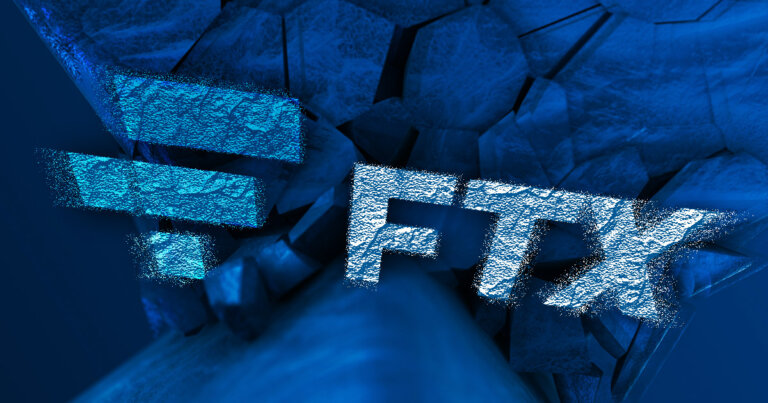 Op-Ed: Crypto doesn’t need the FTX’s of the world
Op-Ed: Crypto doesn’t need the FTX’s of the world 
Cover art/illustration via CryptoSlate. Image includes combined content which may include AI-generated content.
Did Sam Bankman-Fried knowingly commingle funds? We shouldn’t need to care. If crypto is to reach its full potential, the industry cannot rely on entities like FTX and other centralized exchanges.
There should be no need for centralized institutions once a better implementation of blockchain technology has been unleashed into the wild. Users should be able to interact directly with blockchains themselves, and those blockchains should be able to interact with other blockchains. Just look at the mess the industry must now address. And, it’s only the beginning!
This past weekend Sam Bankman-Fried tweeted that he will testify before the United States Congress once he has had time to review what led to the FTX collapse. He wrote in response to Maxine Waters, the Democratic congresswoman who chairs the US House Committee on Financial Services, after she invited him to appear at a hearing scheduled to examine FTX on December 13. The story could continue to get regular coverage on national television.
Since the FTX collapse, Bankman-Fried has denied ever intending to defraud, while admitting to a “lot of mistakes.” Some have suggested it’s part of an elaborate ruse to win back public sentiment and do damage control. Regardless, crypto was designed to insulate people from both incompetence and malice. In the original vision of blockchain, figures like Bankman-Fried wouldn’t need to exist. Here’s how we fix it.
The Future Of Blockchain Will Be Multichain
Instead of one specific chain, users will choose from numerous chains, which will all be interconnected and able to communicate with each other—it’s called interoperability in the parlance of the industry. That’s the multichain future towards which the industry must strive.
Blockchains will communicate with each other sans the need for a centralized server. Users will also be able to exchange tokens between chains, potentially decreasing demand for centralized exchanges. Interoperable blockchains will make using innovative dapps less expensive than Ethereum’s gas fees.
These blockchains will also offer modularity and configuration choice. Users won’t have to develop new smart contracts to deploy their preferred apps, but will enjoy more of a plug-and-play experience. No longer forced into a solitary technological stack, users can leverage the features of multiple blockchains all at once while building out the stack, which will be quick and easy. It will still offer all the functionality we see today—staking, governance, token issuance, NFTs, DeFi using well-known and secure software development languages—with ease.
Blockchain SDKs will also empower developers to build sovereign blockchain applications without the ongoing costs associated with blockchain operations today. This may eliminate transaction fees, which arise due to network congestion, thanks to new reaches of scalability.
The blockchain industry is becoming increasingly trapped in systems becoming more expensive over time. This technology should instead become less expensive over time. Bandwidth should grow along with the network. This can be done by ensuring the network supports the deployment of more nodes, miners, etc., than in the current paradigm.
Furthermore, users won’t be stuck paying transaction fees in a specific token or cryptocurrency. For example, gas fees on Ethereum can only be paid in ETH. Users will pay transaction fees in the token of the dapp in use. Blockchains might also incorporate one of the central facets of the Bitcoin blockchain: a hard-coded deflationary mechanism. It would be best if they did.
Ethereum Will Face Steep Competition From Diverse Blockchains
Ethereum has turned into a blockchain standard without a formal standardization process. For that reason, no particular blockchain may hold the economic power to quickly flip Ethereum, and become a more used blockchain. But, and some will disagree with this, developers will create blockchains with higher economic value in the protocol. To be sure, the “world computer” has shortcomings, and developers are open to a more streamlined blockchain experience.
Scalability remains an issue for today’s blockchains. For example, It can take minutes and even hours to complete an Ethereum transaction. Whereas today complex financial instruments on Ethereum are built with smart contracts, in the future smart contracts will essentially be blockchains in-and-of themselves.
What Will A Blockchain Of The Future Be Like?
Lasting blockchain technology will provide user-friendly designs and interoperability for simple communication between blockchains—and all for free. Interoperability will become synonymous with scalability, and will be made a reality with shared communication standards. Any blockchain will be able to communicate with other blockchains, and contribute to protocol design.
Scalability will be achieved by duplicating blockchains. This will help to relieve congestion. Apps will be divided into multiple application-specific blockchains. Interchain token transfers allow these multiple chains to continue one network.
In order for the promised blockchain use cases like DeFi, NFTs, DAOs, etc. to reach their full potential, they cannot depend on centralized institutions like the FTX’s of the world, and we’ve all seen why in recent weeks. In the future, blockchain users won’t need to worry about whether or not the Bankman-Fried’s of the world knowingly or unknowingly commingled customer funds. Blockchain will be truly trustless, just like in the vision of Bitcoin developer Satoshi Nakamoto.









































































































